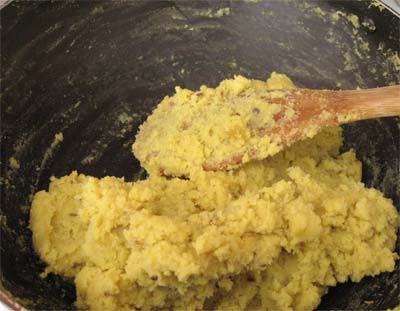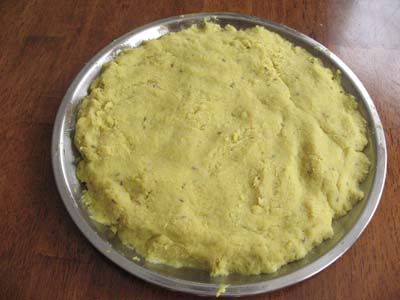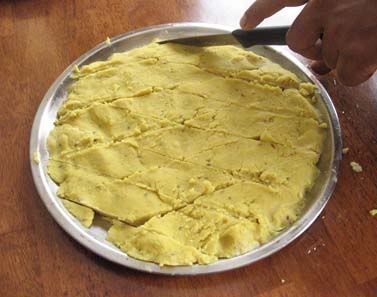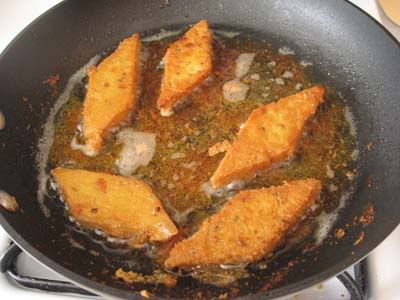Knock,Knock
R you Ghoti or Bangal?
"Bangal" is the colloquial term for people from East Bengal now a separate country called Bangladesh. "Ghoti" is the local term for people from West Bengal. These terms are mostly used in jocular fashion and indicates the ancestral roots of a family as to whether it went back to East Bengal or West Bengal.
There are two subtle things which shake their differences.One is ILISHA-CHINGRI(Good quality Ilisha basically found better in Padma river at Bangladesh,so its close to Bangals and Prawn is famous for Ghotis) and other is EastBengal-Mohonbagan football team.
As I am a hard core female and as people say females arE not fond of soccer,So for me war is mainly who is better Chef?Bangals are very proud of their cuisine and expertise in cooking and even I have heard from some people that “Bangals” know to put even vegetable peels to good use the “Ghotis” know how to apply those to their faces.
As I am a hard core female and as people say females arE not fond of soccer,So for me war is mainly who is better Chef?Bangals are very proud of their cuisine and expertise in cooking and even I have heard from some people that “Bangals” know to put even vegetable peels to good use the “Ghotis” know how to apply those to their faces.
But I am loving daughter of my parent ,My Dad is Bangal and Mom is Ghoti.And Mom is simple Chef with certain delicacy.Not only for that,I like food and love different ascent and style...
Today its about Ilisha .The menu usually BengaleeS prepare is always ilish bhaja(fried Hilsa), ilish bhaape (steamed Hilsa) or shorshe ilish ( Hilsa in mustard sauce) during monsoon.
Years ago it was the day of Saraswati Pujo.In my home this was not only a vegetarian day but a day on which you ate Khichuri, bhaja, chaatni & such. The day didn't hold much of a prospect regarding food for me until my aunt's elder sister called and invited me over to their home for Dinner . I wasn't too enthusiastic about the food thinking it would be the same fare but the lure of her latest Sidney Sheldon was there and so I went.
Come lunch time, the table was laid out and we sat. There were hardly 2-3 covered serving bowls on the dining table and I felt forlorn, till Mashi(Aunt's elder sister) started serving. There was no Khichuri but plain white rice, dal, alu bhaja(potato fries) and a ilish er jhol( Hilsa in a light curry)
"How can you eat fish on Saraswati Pujo ?", I was aghast
"But Bangals have a tradition of eating Ilish on Saraswati Pujo, we absolutely must and if it is Jora Ilish(a hilsa pair) all the better", said Mashi. Wow, Bangals .
And then I saw Ilish with all that begun (eggplant), a Ilish Begun er jhol (Hilsa in a light gravy with eggplant) they told me.The simplicity of the curry bursting with flavor of soft brinjal, the taste of the Hilsa and the mustard oil was too much for me. It was absolutely delicious, it shifted Ilish's position from a special fish you would respect to a homely fish you could love.
Years ago it was the day of Saraswati Pujo.In my home this was not only a vegetarian day but a day on which you ate Khichuri, bhaja, chaatni & such. The day didn't hold much of a prospect regarding food for me until my aunt's elder sister called and invited me over to their home for Dinner . I wasn't too enthusiastic about the food thinking it would be the same fare but the lure of her latest Sidney Sheldon was there and so I went.
Come lunch time, the table was laid out and we sat. There were hardly 2-3 covered serving bowls on the dining table and I felt forlorn, till Mashi(Aunt's elder sister) started serving. There was no Khichuri but plain white rice, dal, alu bhaja(potato fries) and a ilish er jhol( Hilsa in a light curry)
"How can you eat fish on Saraswati Pujo ?", I was aghast
"But Bangals have a tradition of eating Ilish on Saraswati Pujo, we absolutely must and if it is Jora Ilish(a hilsa pair) all the better", said Mashi. Wow, Bangals .
And then I saw Ilish with all that begun (eggplant), a Ilish Begun er jhol (Hilsa in a light gravy with eggplant) they told me.The simplicity of the curry bursting with flavor of soft brinjal, the taste of the Hilsa and the mustard oil was too much for me. It was absolutely delicious, it shifted Ilish's position from a special fish you would respect to a homely fish you could love.
I have been in love with this dish ever since.This is served with white rice for a homely meal.
Ilish Begun er Jhol/Hilsa & Eggplant in a light gravy
How I Do itWash and clean 4-5 pieces of Hilsa. Pat dry and smear with 1/4 tsp of Turmeric and salt. Keep aside for 15-20 minutes
Heat Mustard Oil to smoking in a Kadhai.
Gently slide the fish pieces into the hot oil. Beware of all the spluttering. Note: sometimes I sprinkle a little turmeric powder on the hot oil and then slide in the fishes to reduce the splatter
Fry the fish pieces to a light golden yellow on both sides. Try not to brown or burn them. Remove with a slotted spoon and drain them on a kitchen towel.
Since this is Ilish/Hilsa we will not throw away the oil and use the same oil for the jhol
Temper/Chaunce the oil with 1/2 tsp of Kalonji/Nigella seeds and 5-6 slit hot Indian Green Chilli
Once the spice pops add 1 long japanese eggplant washed & chopped longitudinally in length of 1&1/2" to 2"
Saute the eggplant till they are lightly browned and soft.
Add 1-1&1/2 cups of water. Add salt, a little turmeric and cook till the eggplants soften. Sometimes I will add a little corriander powder but mostly I don't
Add the fish pieces and cook for 2-3 minutes
The gravy will be light and soupy and tastes delicious with white rice.




